Leica and “street photography” are so intertwined in photography folklore that becoming the owner of a Leica camera imposes a cultural obligation to do “street”. Armed with my Q3, I set out upon that path, but soon discovered that I was lost. What exactly is street photography, and how should I judge an image in that genre to be good, bad, or indifferent? I turned to Klick magazine for some help.
Introducing Klick
Derek Darke is founder and editor of Klick magazine, a quarterly publication dedicated to putting the best of street photography into print and allowing the photographers to tell the backstory of their images. I recently sat down with Derek to try to understand what exactly is “street photography” and what makes an image worthy of publication in Klick. Examples of images previously published in Klick are displayed throughout the article.
But first – a request
I’d like to involve you in an exercise about street photography. For now, just look at the picture below. At the end of the article, I’ll pose a question for you to consider.
The origins of street photography
The practice of taking candid pictures of public places dates back as far as the 1870s. It became increasingly popular during the 1930s and 1940s, coincidentally, around the time that Leica introduced its first cameras with a coupled rangefinder. It was also a time when the great “picture magazines” of Vu (France, 1928), Life (USA, 1936), and Picture Post (UK, 1938) surged in popularity. However, the term “street photography” did not become widely used until the 1960s and 1970s.
Those magazines shaped our collective view as to what is a “street photograph”. The editors carefully curated the images, deciding what the public saw in the next issue. Thus, the editors became the gatekeepers of the photographers’ output. It was they who built the reputation of the photographers and shaped our collective opinion of what was a good photograph.
Today, social media is the primary channel through which billions of images are published. They are “liked” or, more often, ignored, as the doom-scrolling populace speeds by with barely a glance at even the most carefully crafted photograph. The democratic right bestowed upon us by the internet has endowed us with the capability to publish a fire hose of mediocrity, tagged #streetphotography.
Klick magazine was started as an antidote to that torrent of the forgettable. It is intended to be a space where the reader can take a proper look at each picture. They can also read the photographer’s words, learning the intention and history behind the image.
Street photography today
My conversation with Derek began with an attempt to define what is meant by “street photography”. Derek’s first criterion is that the picture must “capture the moment”, but not just “any moment”. For example, a snapshot of a woman carrying a red umbrella walking down a street is not a “moment”. There is nothing visually special in the frame.
By contrast, an image which captured three women, all wearing the same dress but socially unconnected one to another, would be a good street photograph. So, by implication, the ‘moment’ must encapsulate something visually distinctive.
For Derek, pictures of buildings are not street photography pictures; that is architectural photography. He therefore wants the ‘mark of humanity’ to be present in a photo for it to be potentially classified as a street photograph.
While I tend to agree with Derek, and Henri Cartier-Bresson for that matter, regarding the importance of the “decisive moment”, I think the issue of categorising what is and what is not, a street photograph is quite difficult. Most of us would instinctively agree that street photography is different from sports photography or wildlife photography. However, consider the following two pictures.
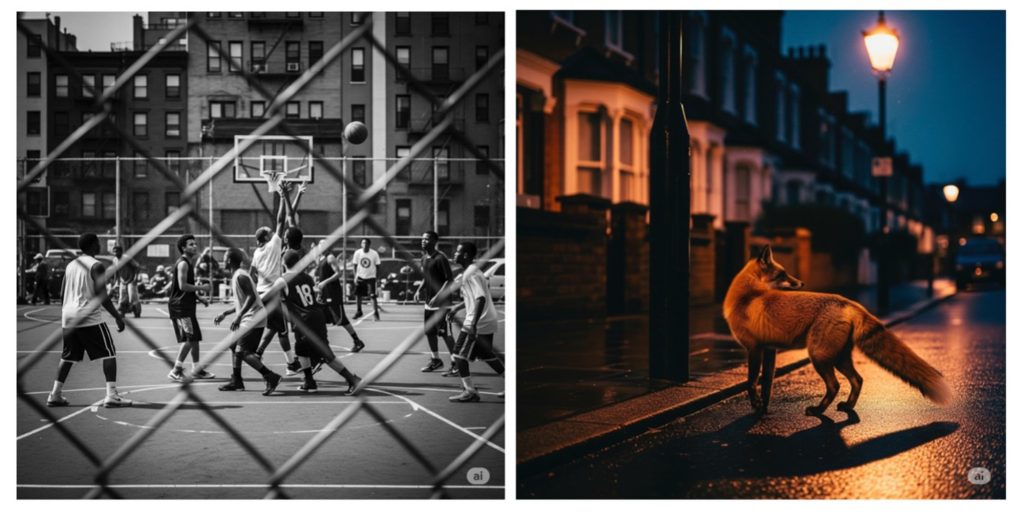
Is the one on the left a “sports” or “street” photograph? Is the one on the right “wildlife” or “street”. Ignoring the fact that these are both AI generated (for the purpose of editorial expediency), this type of classification ‘edge case’ suggests that drawing a reliable boundary to strictly delineate an image as street photography or not, is very tricky.
I suspect the answer can only be determined by two factors: the intent of the photographer, and the classification boundaries within the viewer’s own mind. What is street for you is sports or wildlife for me.
A million opinions
Researching the topic of street photography reveals an endless list of sub-categories, that at least some people feel rightly belong in the street photography camp. These range from architecture, through abstract, candid portraits, juxtaposition, humorous, and on to still life, drifting into social documentary.
Derek feels that there is a likeness between street photography and blues music. For him, street photography is inherently unruly. It can be messy, out of focus even, but it must have soul. For him, that feels like blues music.
He feels that many photographers explore other types of photography, but eventually gravitate towards street photography because it is “real” and unpredictable. It’s the “real photographer’s photography”. I can understand that view. But, I would liken it more to jazz.
A harmonious whole
Pop music is easy to listen to because it has a single central melodic theme — in the same way that a posed portrait is easy to look at because there is no visual complexity. In jazz, the various instruments intertwine in often unpredictable ways, and only when their various musical routes converge into a harmonious whole does the music really come together. Similarly, a street scene frequently contains disparate elements which must coalesce in the frame to form that “special moment”.
So far, we have established that street photography can be messy, diverse in nature, unruly … and, importantly, raw (not subjected to unnecessary post-processing). But, in practice, I have discovered, it is also governed and judged by arcane rules. A topic that we will return to when we revisit the “boy who almost flew away” photo later.
What Really Matters
We can approach the idea of the boundaries of street photography by using tests that allow for shades of grey rather than strict black-and-white, in-or-out, results. For example, pictures that are spontaneous rather than posed, in public rather than private spaces, will tend to be easier to classify as street photographs.
But what of “street portraits”, where the subject is invited by the photographer to have their picture taken in a street environment? Such pictures are undoubtedly posed but not previously planned, and are in an urban environment, open to the public. Does this genre therefore sit within or outside the street photography category? Such decisions amplify the idea that street photography is a slippery concept to pin down.
One of the defining ambitions that drove the founding of Klick was to foster a community that provides a place where people who love whatever this thing called street photography is, can share their images and tell their stories. Maybe we don’t need to be too certain of the boundaries of street photography definitions. We should, instead, focus on building that community and, most importantly, enjoy the time we spend out on the street.
The boy who almost flew away
To close our conversation, I asked Derek for his opinion on this photograph. In his judgement, the image is spoiled by the boy’s foot not being entirely separated from his sister’s face; thereby revealing another “unspoken” rule of street photography. This potentially “good” image has indeed “captured a moment”, is visually distinctive and has not been enhanced by elaborate post-processing, but has broken a hidden rule that visual elements must not overlap.
He pointed out that if it had been taken by someone experienced in street photography, they would not have been happy that the flying boy’s foot was not visually separated from his younger sister’s face. It was therefore not good enough to merit inclusion in Klick magazine.
Derek holds to the mantra that “in street photography, there are no rules”. However, “not overlapping”, whilst not being a “rule”, is something to be avoided, and, in the specific case of this picture, prevents it from being a “good” street photograph.
Who took the photo?
The image was taken by the author, a photographer with zero “brand value” in the street photography world, and so I discussed with Derek whether the assessment of this picture, and that of other street photographs, could be biased depending upon the identity of the photographer. Had this picture been taken by a photographer who had built a large social media following, would this minor distraction be more readily overlooked?
We concluded that it would then be difficult to separate the picture from the photographer’s reputation. Therefore, we have revealed another “rule”; that it is not just the image by which we judge its pictorial merit. Occasionally, the “brand value” of the photographer provides a ‘halo effect’ that enhances the visual “value” of the image. By logical deduction, may it therefore also be true that some images by renowned photographers are not actually as “good” as they have been rated?
Seaside Woman
In 1977, Sir Paul McCartney (of The Beatles), released a song called “Seaside Woman” under the band name Suzy and the Red Stripes specifically to test whether he could create as big a hit song without it being directly associated with either his name or that of The Beatles. The result was a song which rose to become #59 on the US Billboard Hot 100; not an entire flop, but nowhere near the success that would have been achieved had it been released under his own name.
My question to you, Dear Reader, is therefore: In your opinion, is the “boy who almost flew away” image a good street photograph, or is it visually impaired by the location of the boy’s foot, consigning it to the darkroom floor? If it had been taken by a famous street photographer or perhaps by Martin Parr CBE, as an example of his seaside imagery, could it then be viewed as a “great” photo? I would welcome your comments.
In conclusion
I remain of the opinion that I still don’t understand how to assess a street photograph. As a result, I often fail to understand the alleged artistic merit of some pictures which have been elevated to a higher plane of public applause.
For example, a picture of people sitting behind a café window with reflections of the street, is a trope that appears to be popular and much ‘liked’. But, all too frequently in my eyes, it is just an image of the commonplace that has had “importance thrust upon it”.
In this age of social media with its fire hose of visual mediocrity, the real gems — those special moments — are just as rare as they ever were. We know that a day on the street may generate hundreds of images, but precious few of any lasting value, just as the panhandlers who sifted for gold came to realise.
I’m left with the feeling that street photography is one of the most challenging ways to wield a camera in the world. When one of those special moments arises to be sucked behind the shutter curtain, there are few better feelings.
But not all that glitters is gold. We should not fool ourselves into believing that a pale pastiche of a much-copied image is anything more than practising the style of someone much more accomplished than ourselves. Occasionally, the emperor really does have no clothes.
Klicking into place
Derek’s motivation in starting the Klick magazine was to provide a place where the best street photography today was given a printed place to be properly appreciated — a space entirely separate from the endless scrolling of social media sites.
He is clearly both passionate and knowledgeable about street photography, and the magazine is of high quality, both in its content and physical form. Picking up a copy of Klick, it is immediately apparent that the design has been carefully considered, and the content properly curated through the editorial process.
For me, it has echoes of the original picture magazines that made street photography popular. It has an editorial hand firmly on the tiller to guide the finished body of work to become a coherent and interesting collection. As Derek summarised his initiative, Klick magazine is “for street photographers by street photographers”, whoever they are and wherever they may be. I wish him every success.
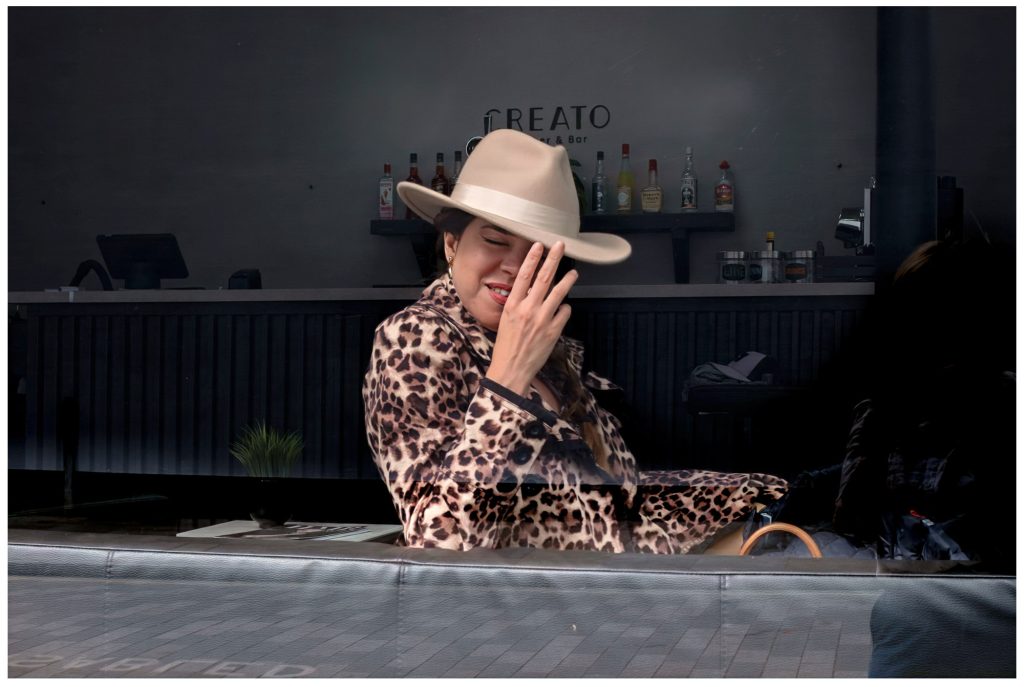
It would therefore be fitting for us to close with a final few images from the pages of past editions of the Klick magazine (link to purchase a copy can be found at the end of this article).
Where to buy Klick
Klick magazine Issue 6 is published on 1 October 2025 and, together with back-issues, can be ordered here.
Make a donation to help with our running costs
Did you know that Macfilos is run by five photography enthusiasts based in the UK, USA and Europe? We cover all the substantial costs of running the site, and we do not carry advertising because it spoils readers’ enjoyment. Every amount, however small, will be appreciated, and we will write to acknowledge your generosity.

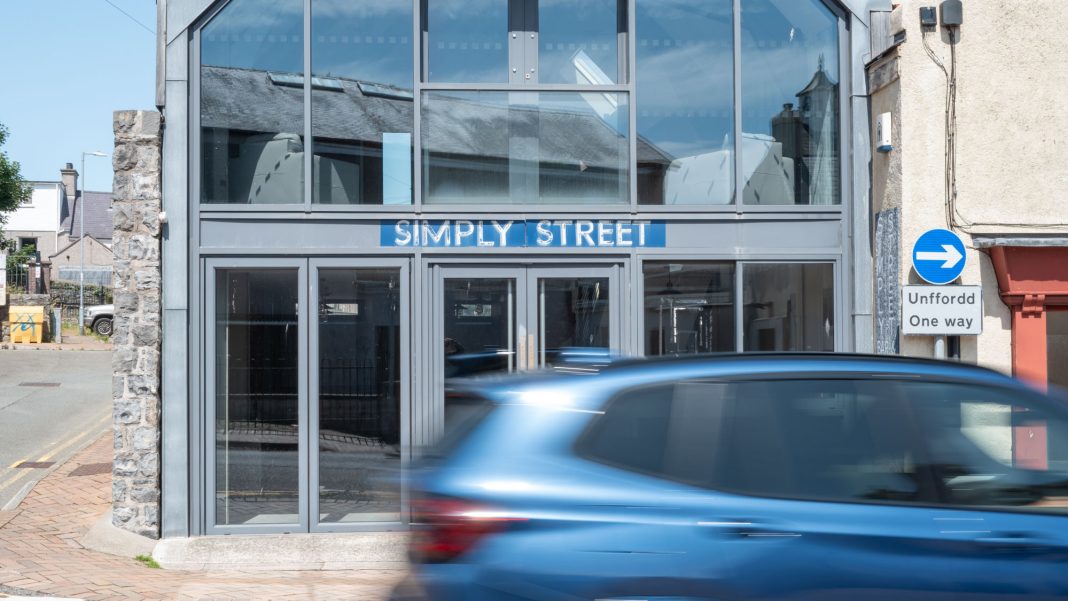
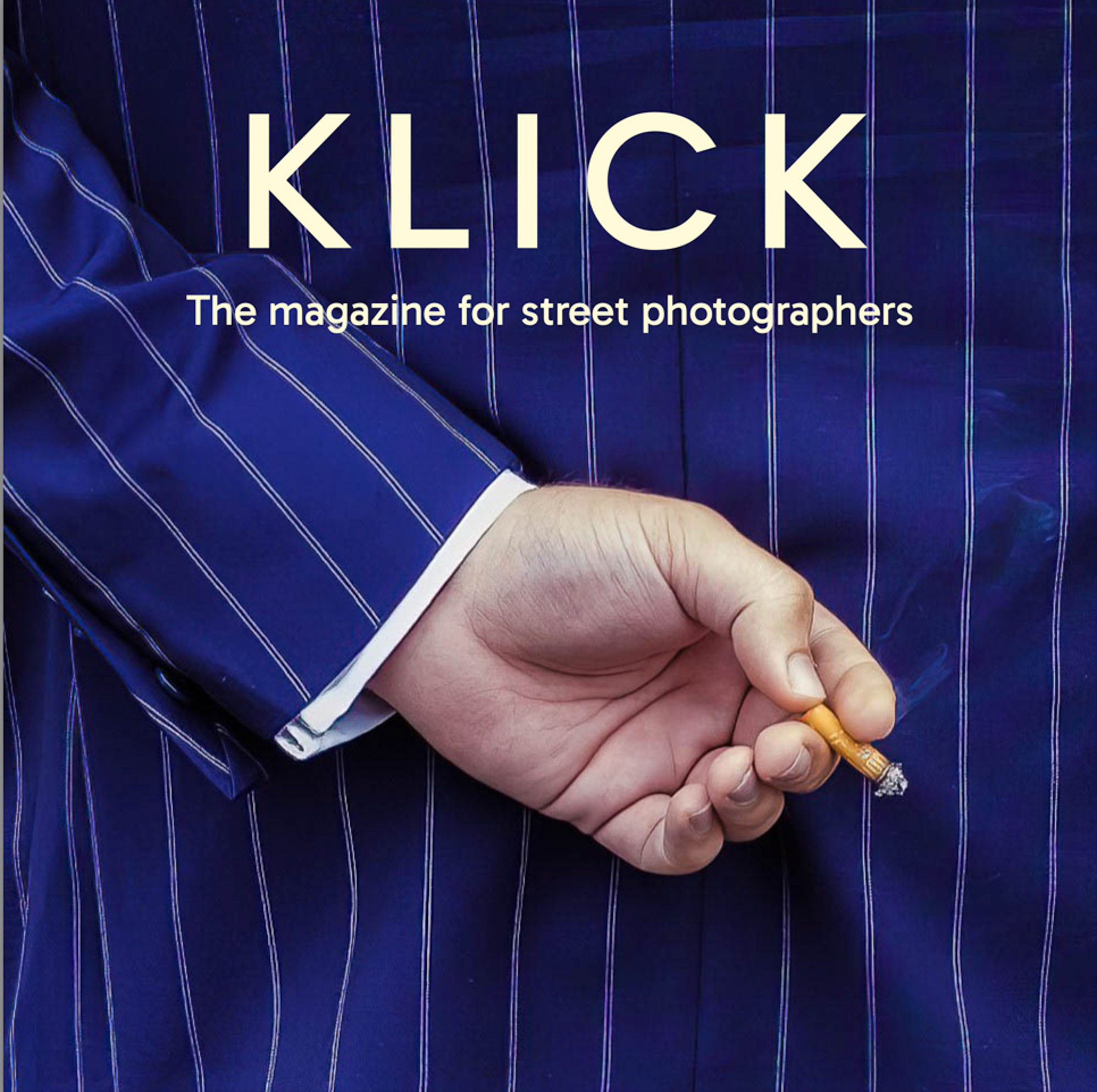
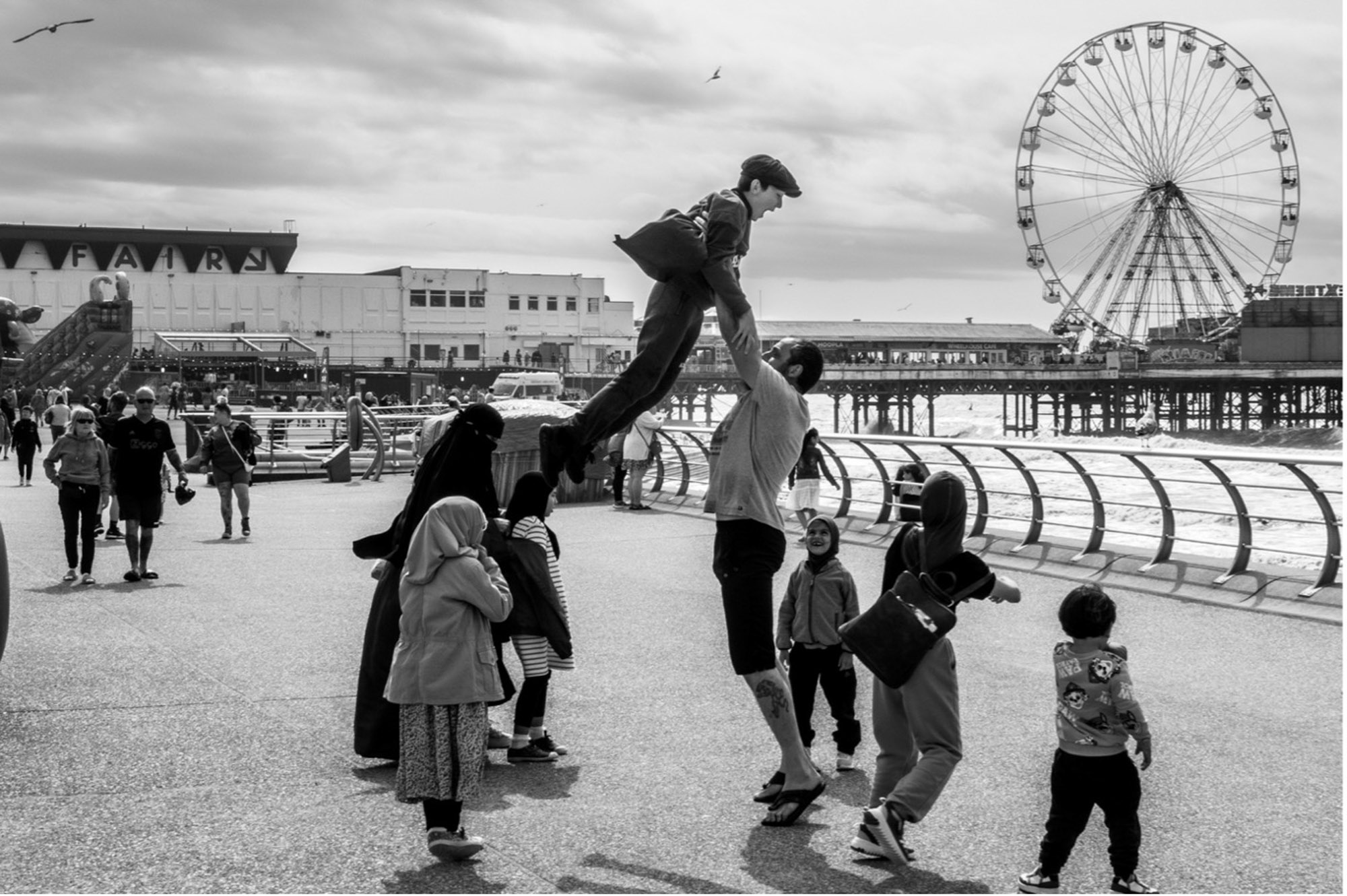
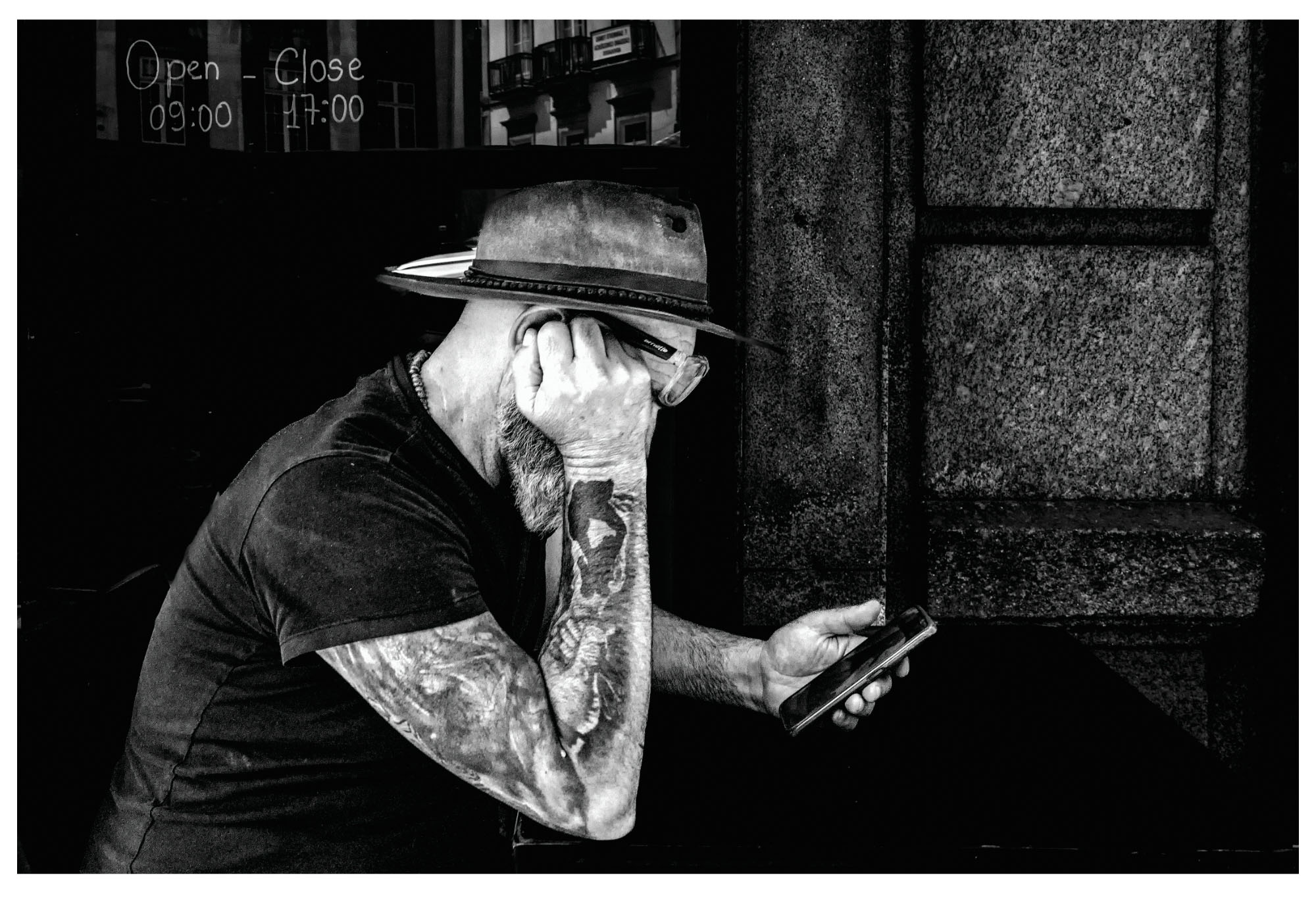
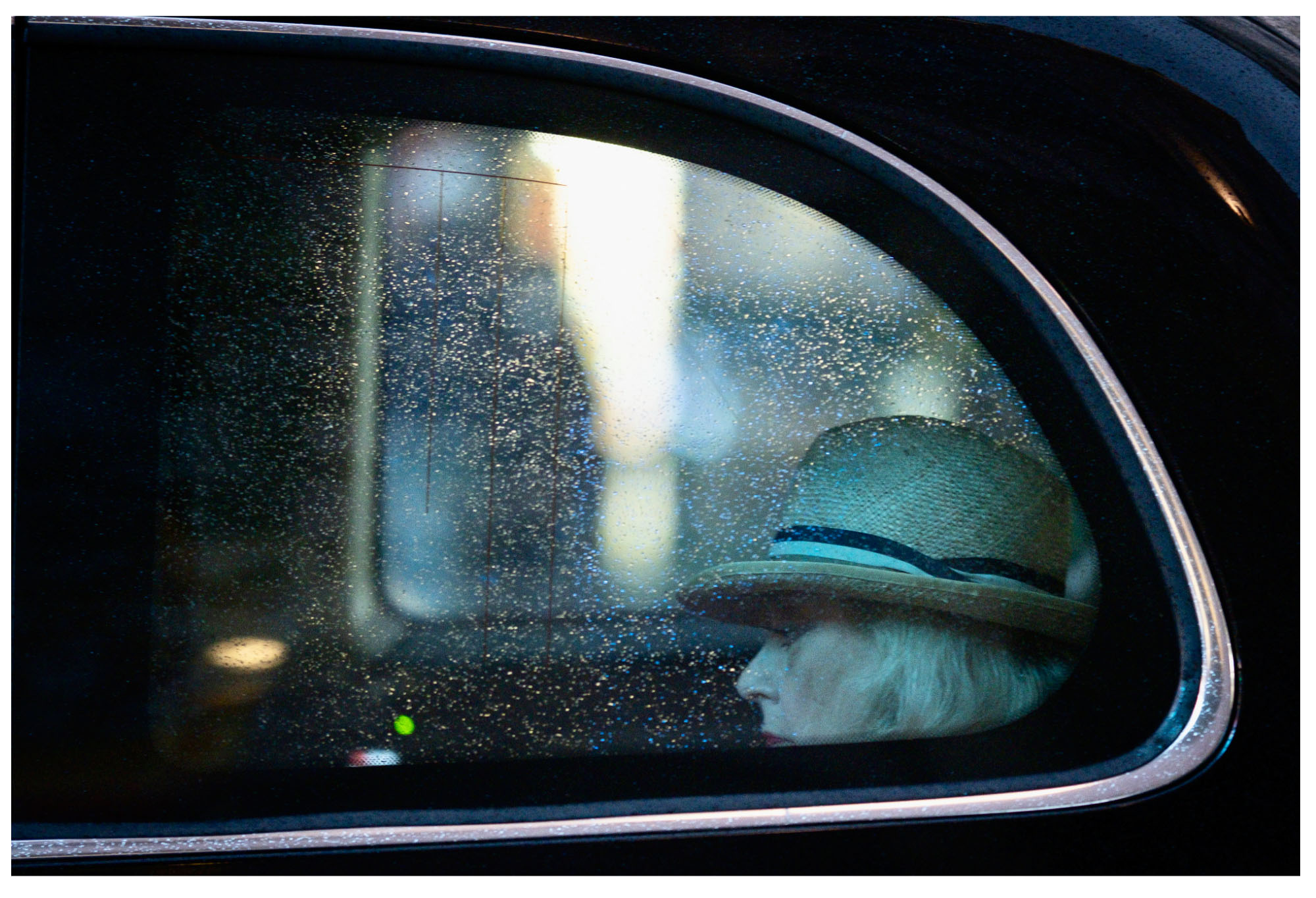
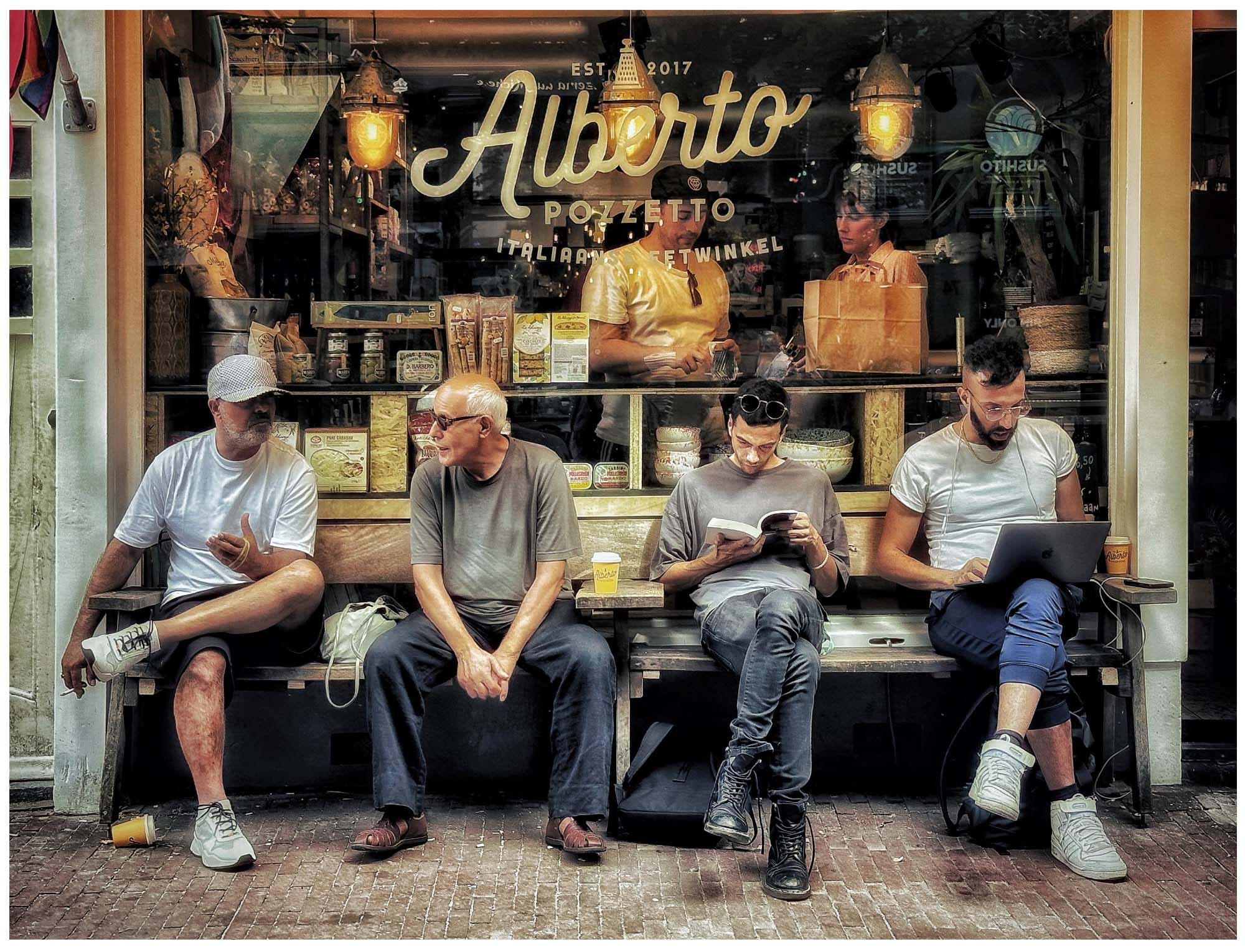
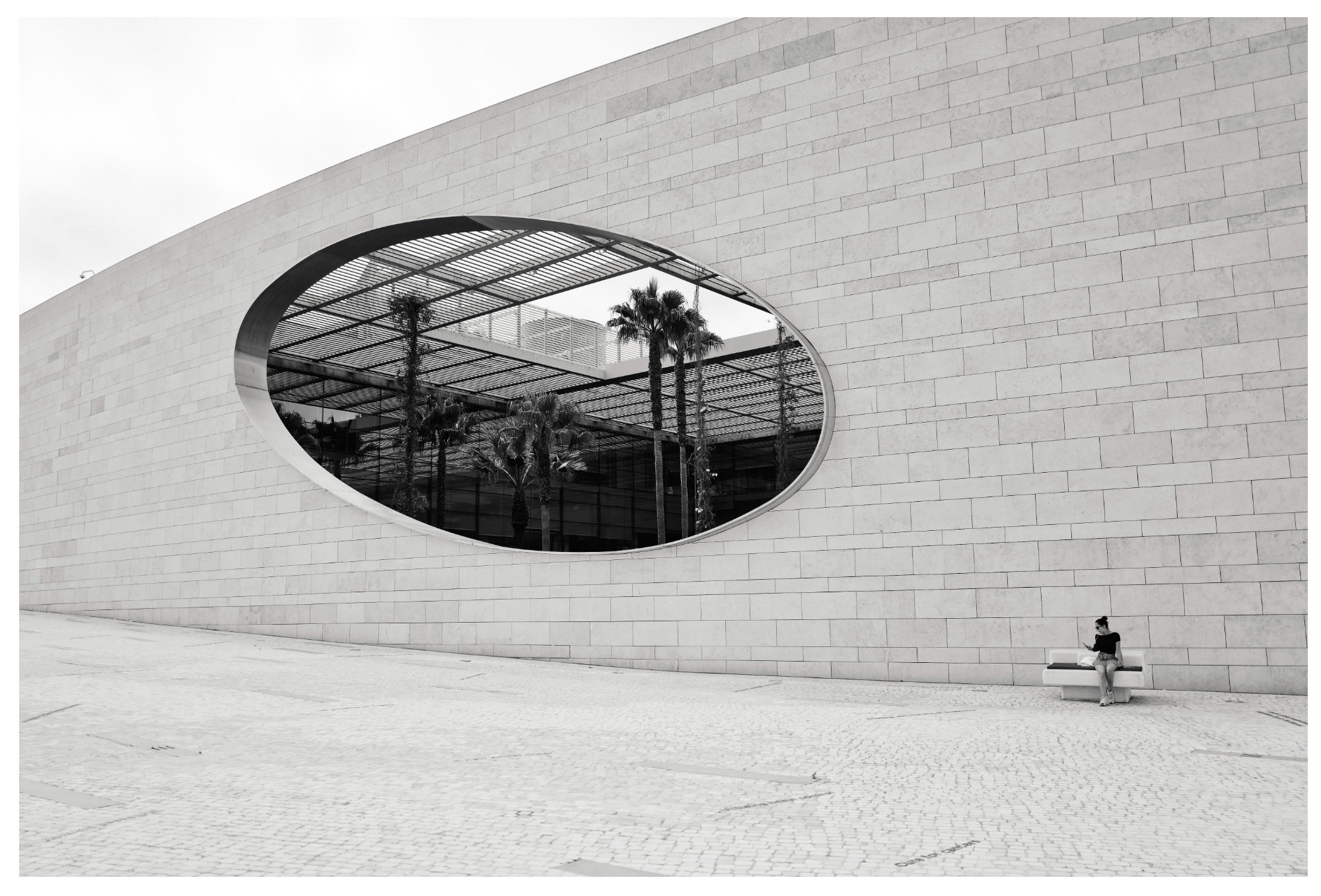
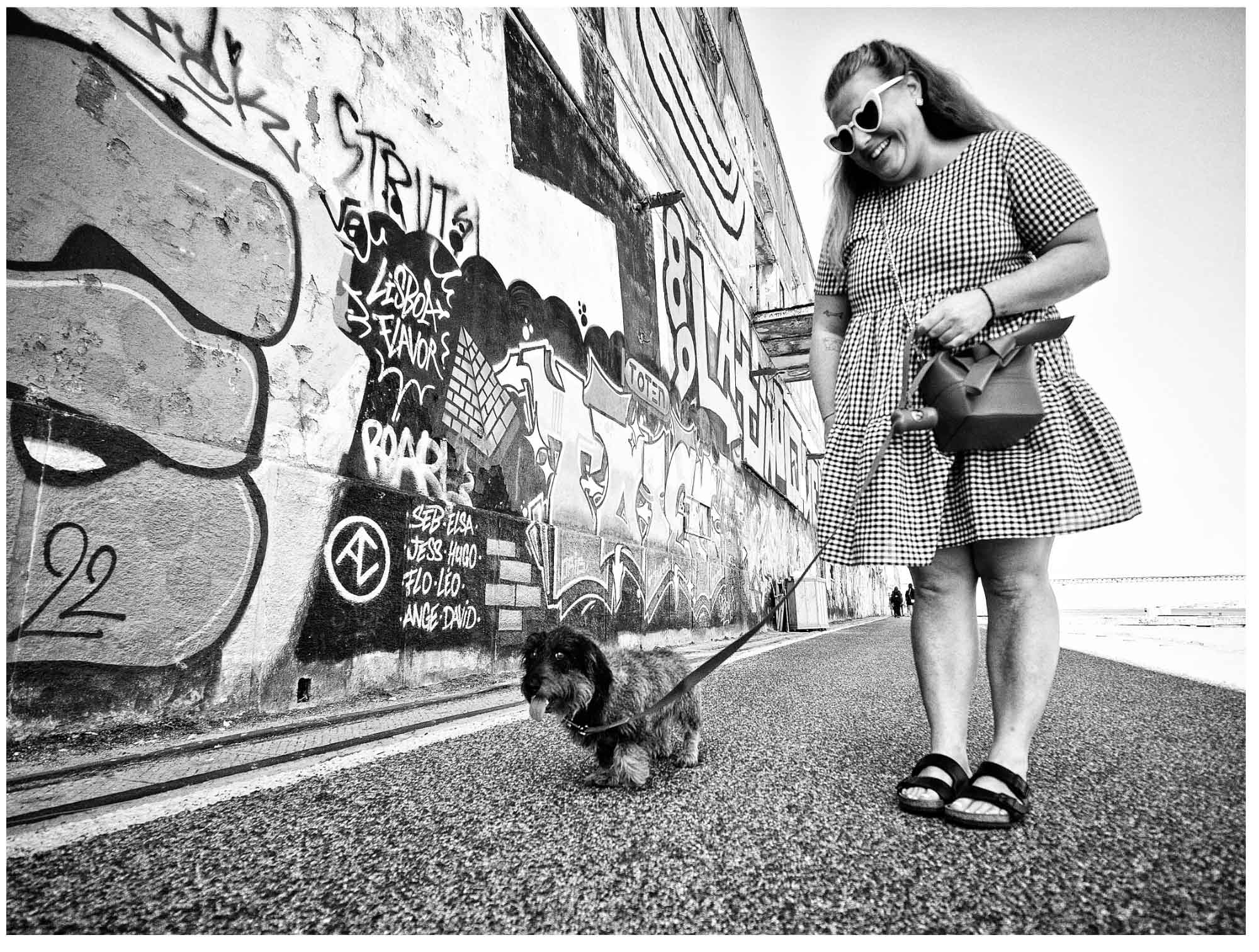
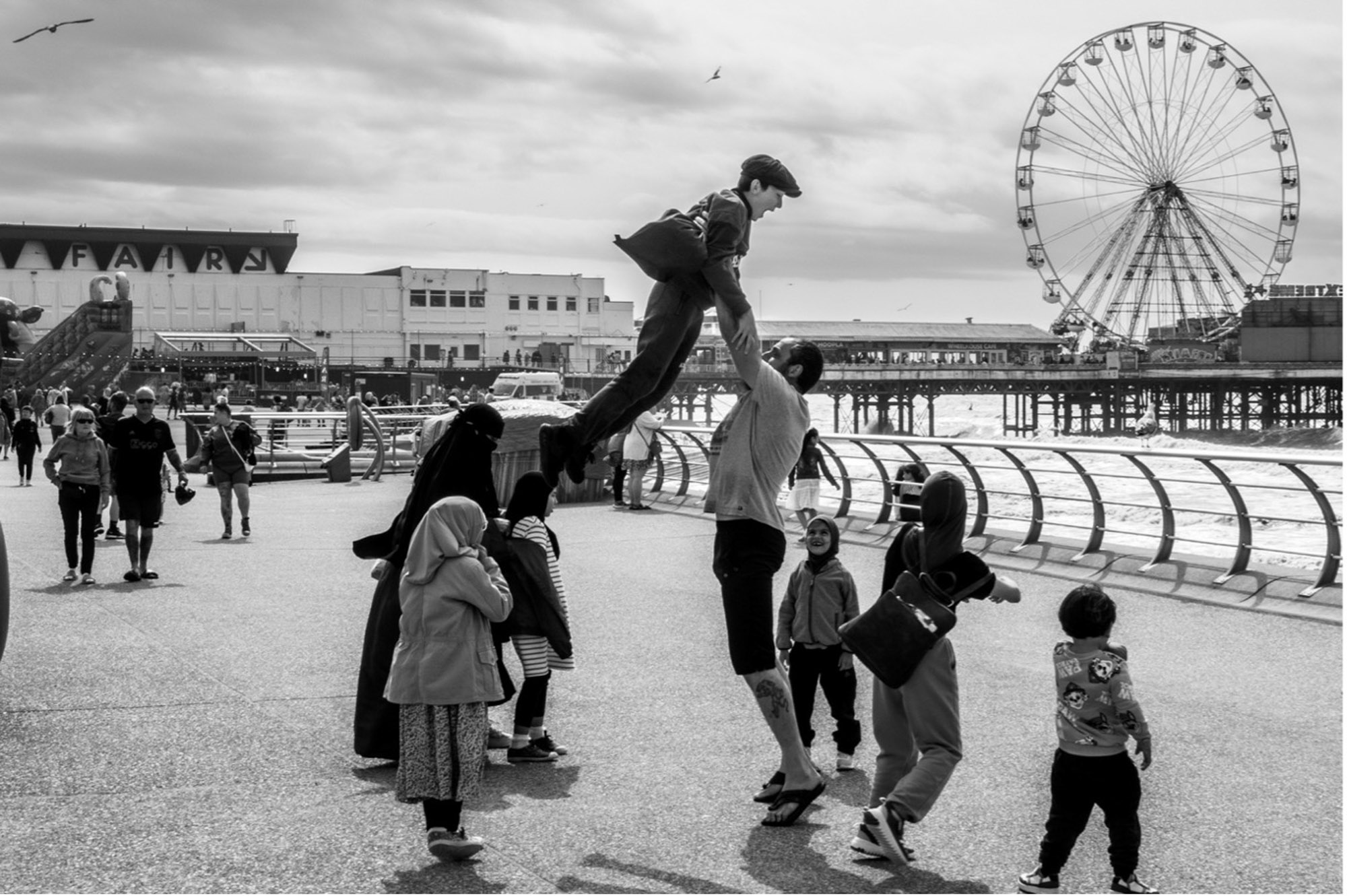
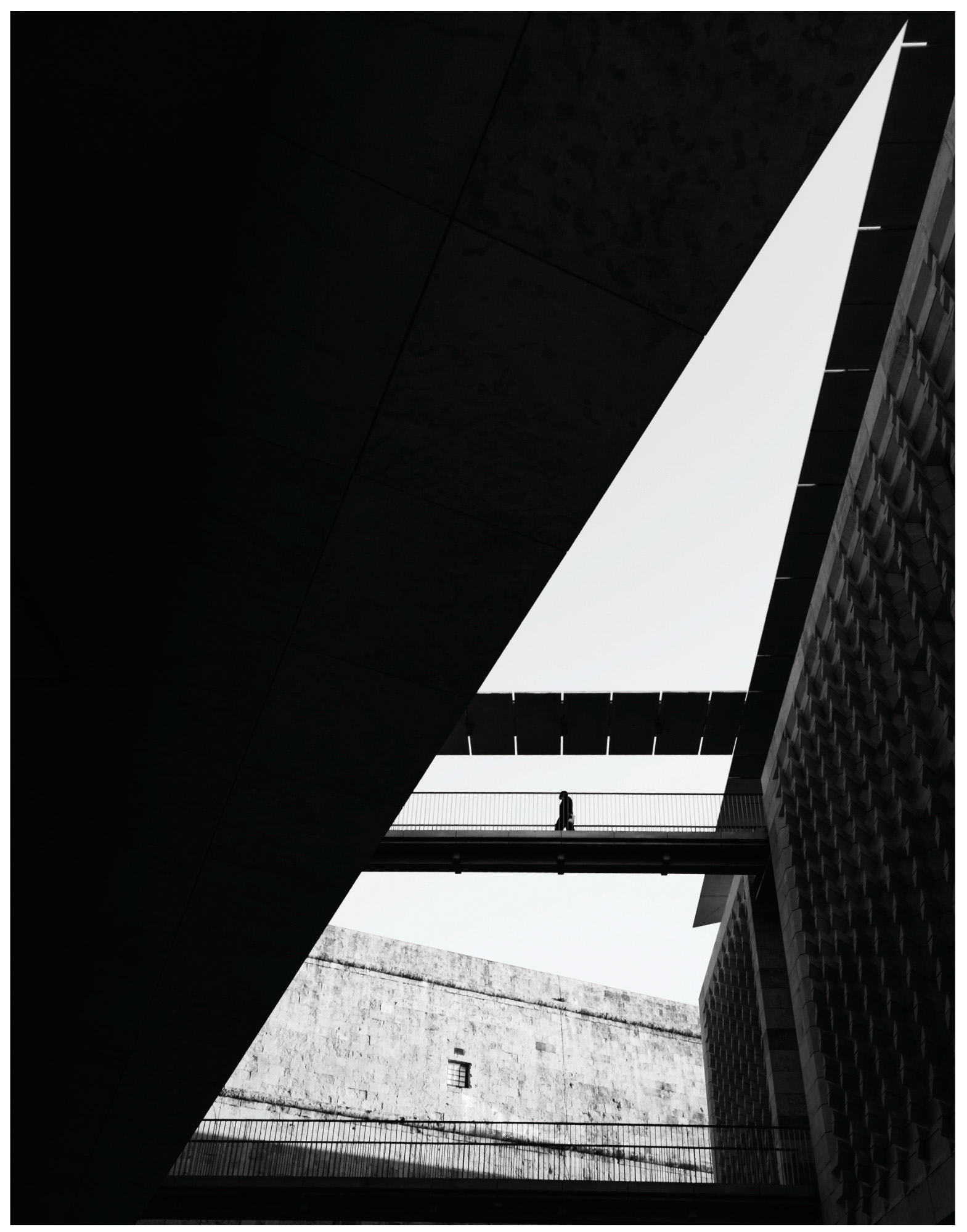
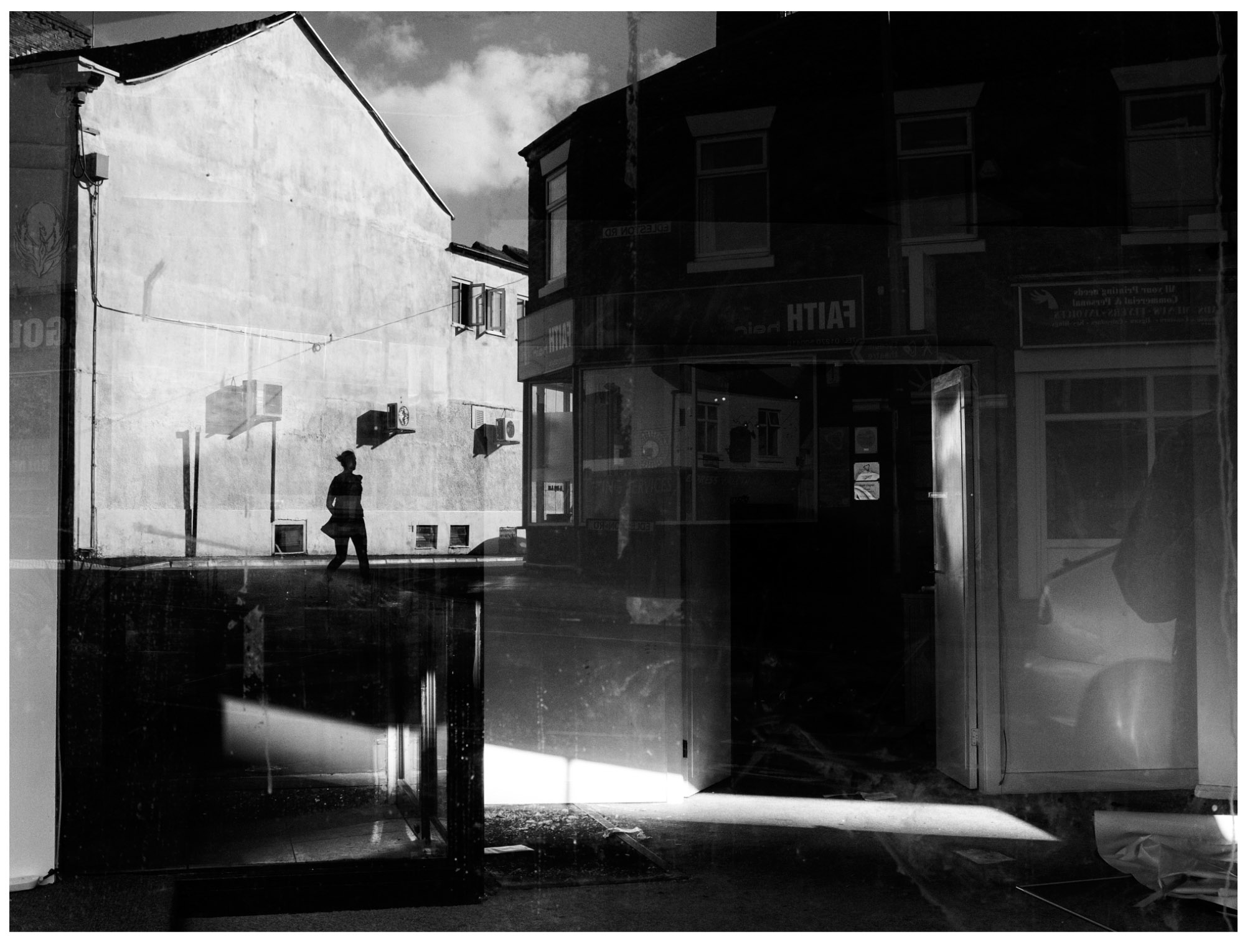
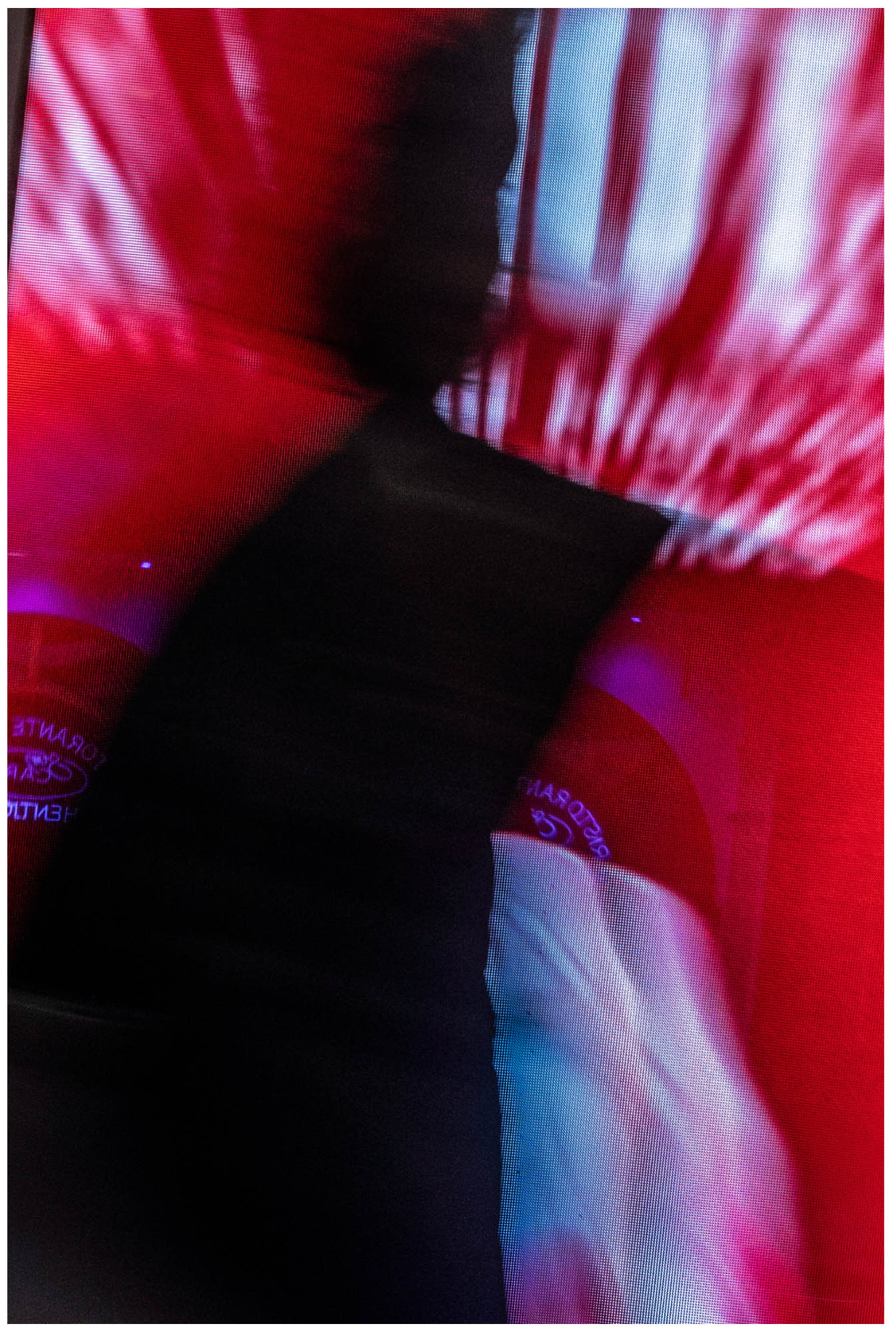
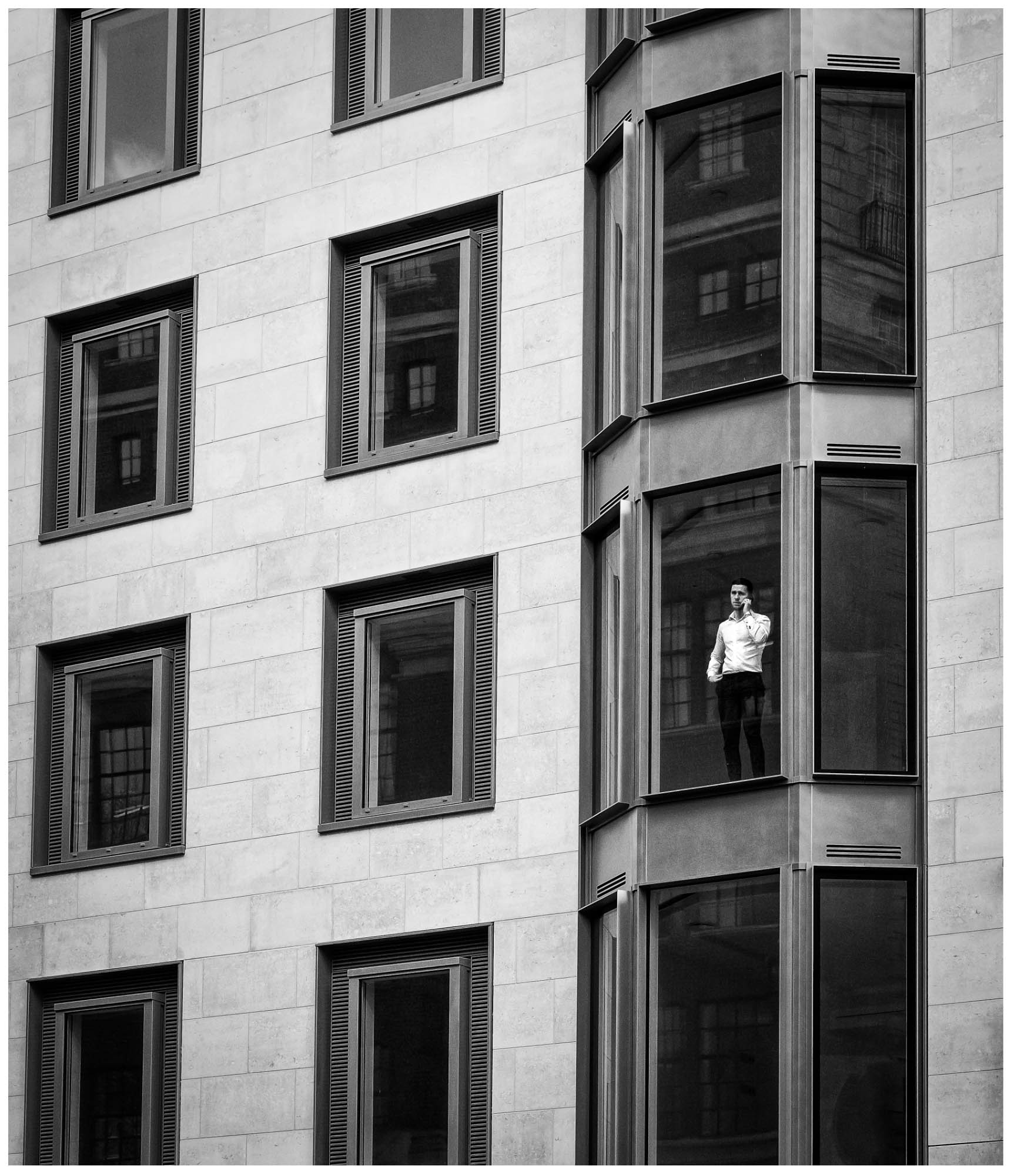
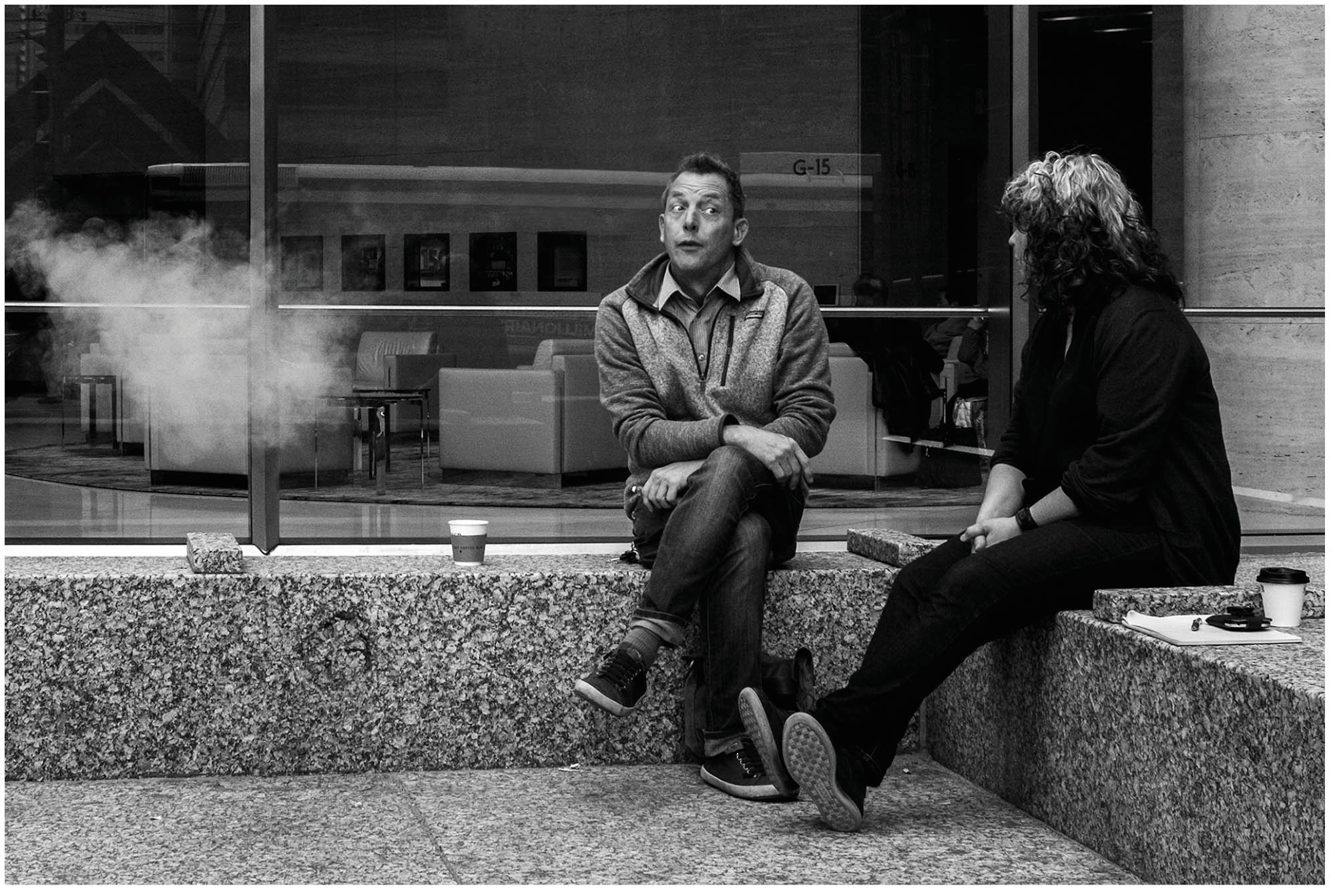
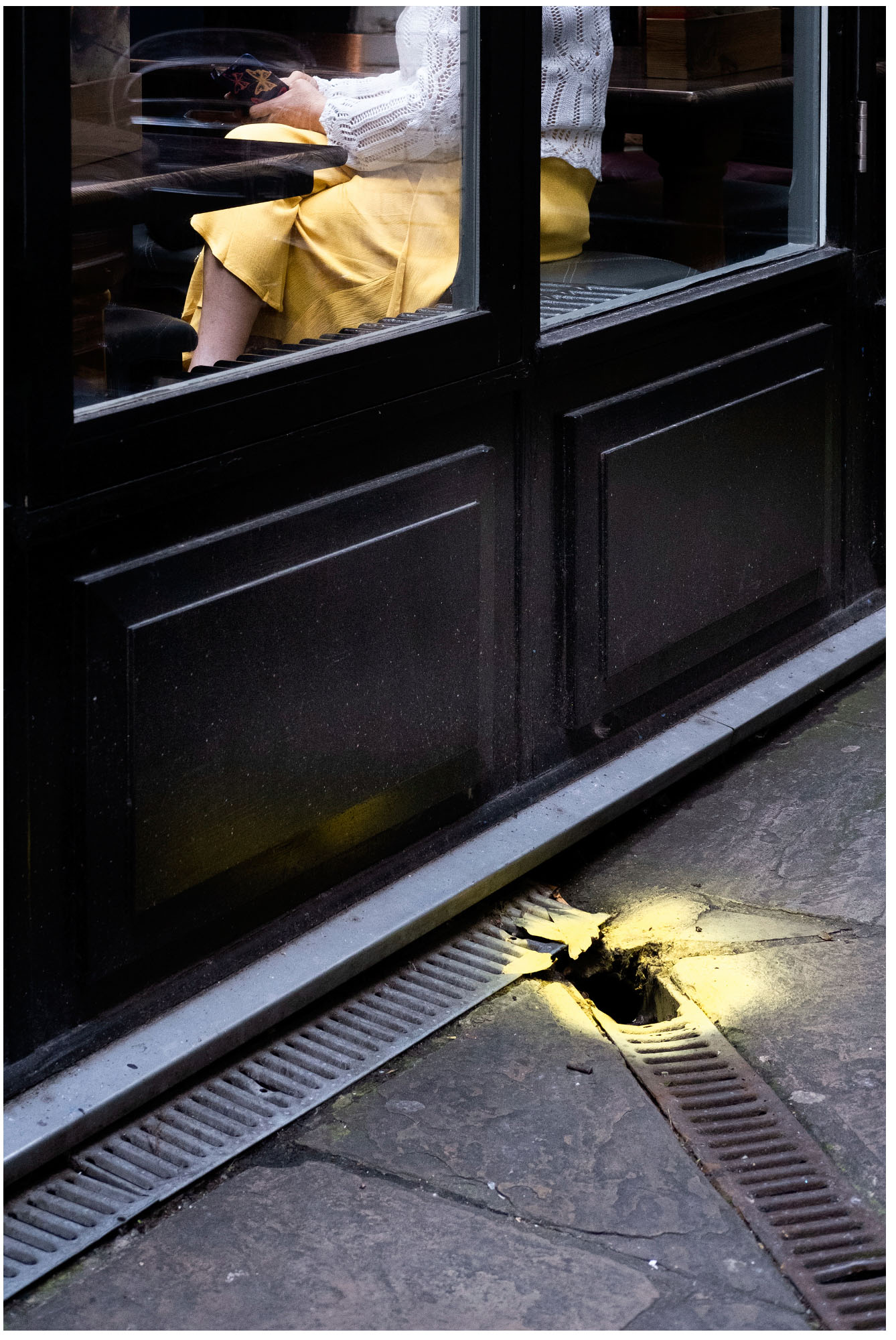
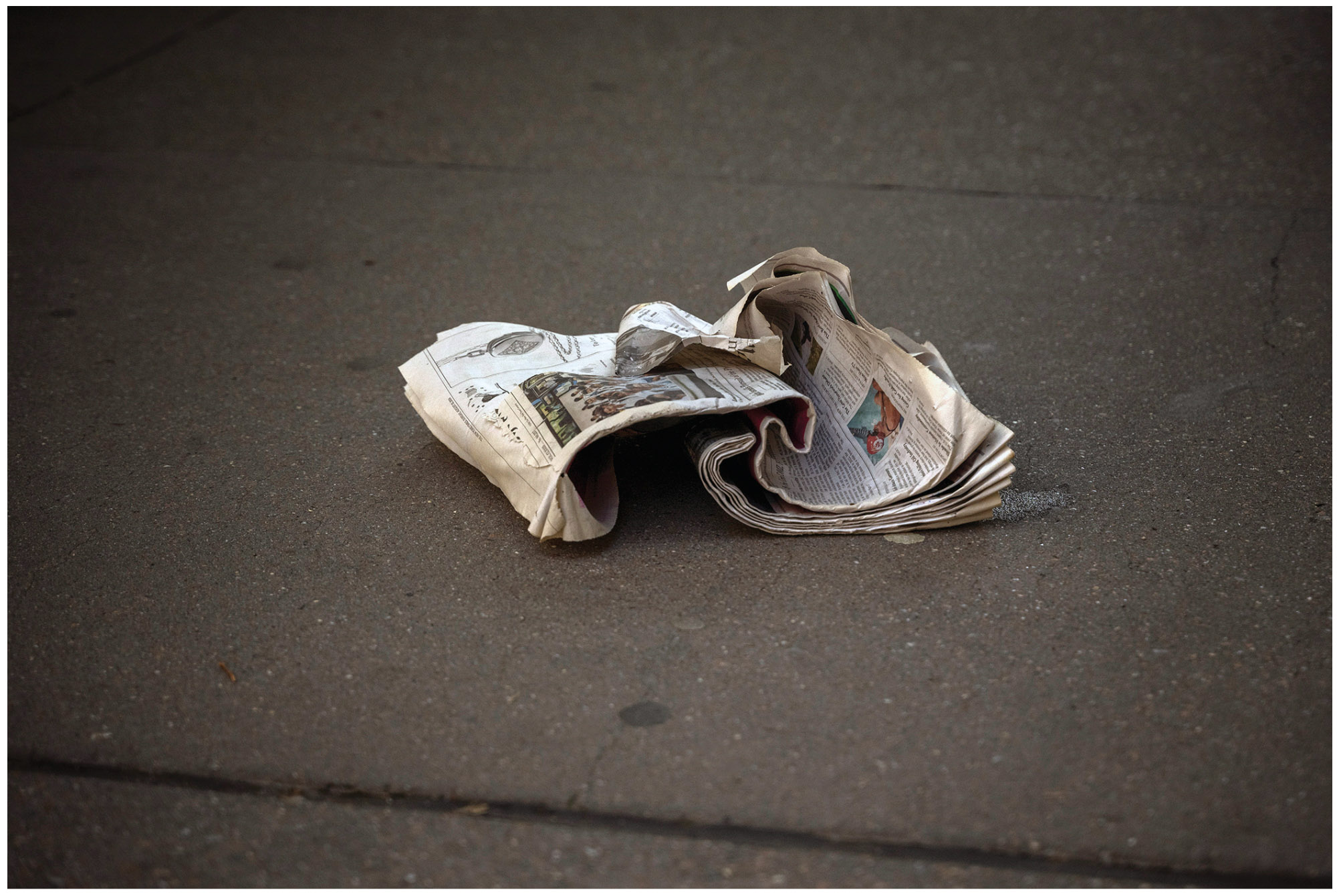
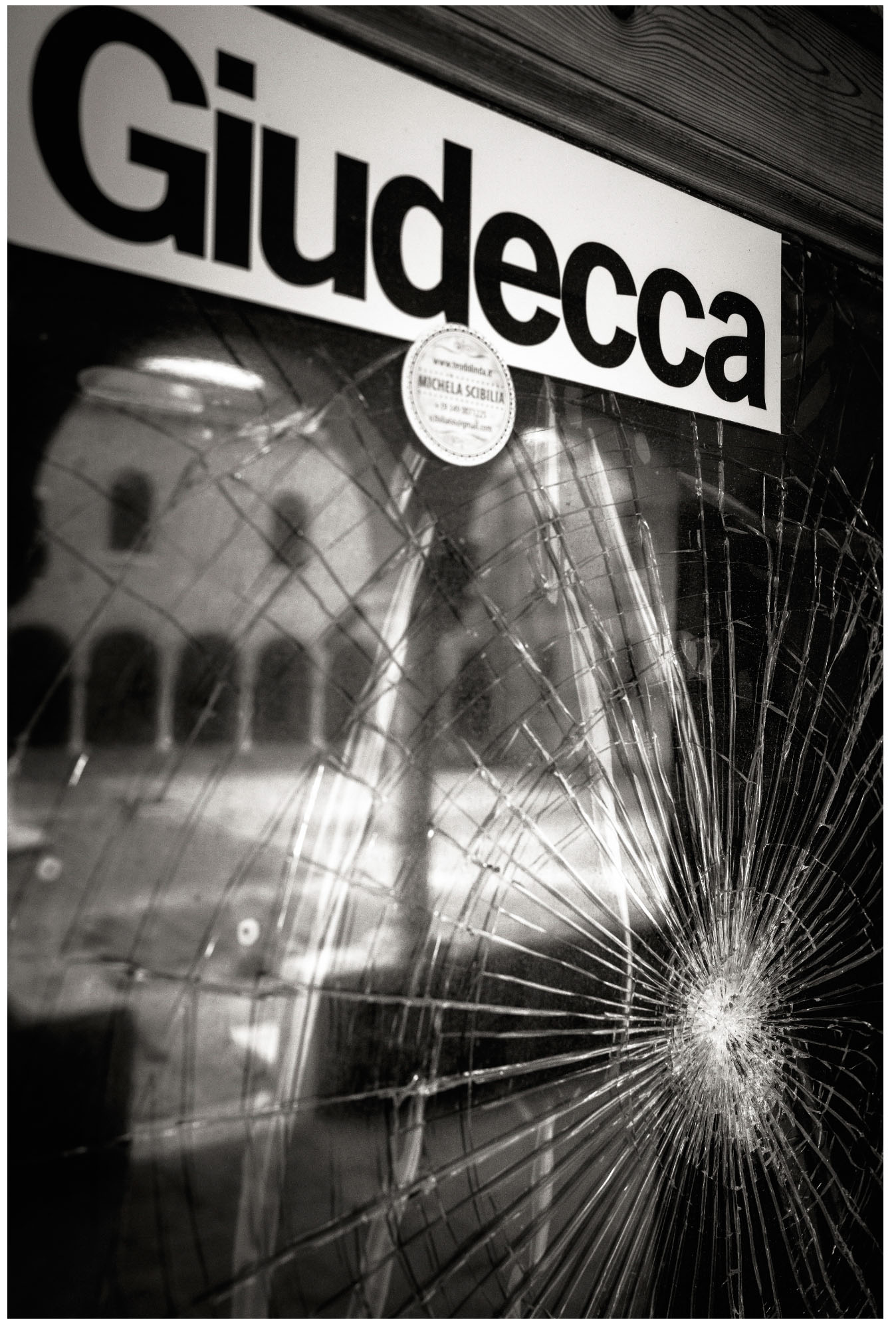
I’m not sure I agree with the assessment of the photograph. Sure, having a bit of space between the boy’s foot and his sister’s face might be ideal in a perfect world — but this is street photography, not studio portraiture. When you’re responding to a fleeting moment like that, you don’t have the luxury of rearranging your subjects or waiting for the geometry to tidy itself up.
And in this case, the overlap doesn’t actually confuse the viewer. You don’t have to stop and decipher what’s happening; it reads instantly. The energy of the moment, the joy of that lift, the balance of figures — all of that is what matters. If a “flaw” doesn’t distract, it’s not really a flaw at all. I think this is a great street photograph.
The larger question — whether such imperfections are forgiven when the photographer is famous — is an interesting one. Would we suddenly declare the shot flawless if we discovered it was by Cartier-Bresson or Erwitt? Or would we simply say, “Ah, even the greats have their imperfect moments”? Personally, I think a photograph should stand — or stumble — on its own.
I think most people, faced with the knowledge that the photograph was taken by a renowned photographer, would conclude that it was all deliberate. “We should all try to get feet overlapping because the great man did it”. But I agree with you, this was a wonderful street shot and I wash I’d taken it.
Thanks Mike!
I do not think it is a big problem that the foot over laps. Would it have been a bettre photograph with separation? Not necessarily. A small “mistake” makes it more interesting.
I think the question about whether it matters who made the photograph is very interesting. I think it matters since it is always a part of a bigger body of work. That is why an image might be interesting. The same image without any knowledge of context to other work of the photographer might not be that interesting. The funny thing is that it might become meaningful later if the photographer builds a name.
This was a very interesting article.
Thanks Peter. The Japanese concept of Wabi-sabi (侘寂) finds beauty in imperfection, impermanence, and incompleteness, so I guess the ‘Boy Who Almost Flew Away’ might be better appreciated in Japan. And, with regard to an image becoming more meaningful over time, the works of Vivian Maier, Diane Arbus and William Eggleston, all had the “value” of their work increase as the photographer’s fame and reputation grew.
Good examples of photographers whose works value has increased over the years. I did make a video about Wabi-Sabi and street photography with the idea of zen and part of that is to embrace the imperfections. I hope it is ok to share the link to that video: https://youtu.be/S3NsQ3UTAw0
I really like this photo, it is a definite decisive moment and obviously not shot with a fast motor drive. As the foot is black and overlaps the girl’s black hijab I do not find it too distractive. When I retired, my pals gave me the book of Cartier-Bresson’s contact sheets: He took many frames to get his own “decisive moments”, which turned out to be a rather good gimmick.
I judge a photo by what I feel about it: if I wish i had taken it then it is fine for me and probably pretty good too, because I am fussy about my own efforts . When I was younger and much more mobile I used to enjoy street photography and trying to notice anything interesting about a location. Elliott Erwitt, Pogus Caesar and Alan Schaller being fine examples of inspiration.
Now at nearly 80 I do what I would call stake outs: finding a location with possibilities near a station, bus stop or car park. I set myself up on a shooting stick or folding stool, with a trolley for a small camera outfit. This sometimes works well but often not particularly. I am still enjoying my photography as a hobbyist. I don’t chimp except for checking exposure on a mirrorless body.
I take photos for my own pleasure and apart from some prints no one else really sees them, except my wife. I keep meaning to collect my favourite shots for a self published book but am still hoping that the best is yet to come. I wonder how many of us will pop their clogs with computer disks full of unseen images that will disappear into a skip, I am not sure my children will be that fascinated enough to go through them all.
We have shelves full of photo albums going back over 40 years – I strongly suspect they’ll go in the skip when we pop our clogs too!
Interesting article. Two comments: 1) Similar to Who took the photo? Where was the picture taken? Do we tend to like an image more if it was taken in an iconic and (through movies and other pictures) very recognizable city like New York City or Paris? And are we more likely to identify it as street photography if it was taken in such a city? 2) I personally associate street photography very much with people. The last two pictures are in my opinion more walkaround/walkabout or documentary photography. But then again, what is exactly the difference?
Thanks for the comment. I think that we are indeed more likely to fit an image into an ‘approved’ category if it matches with others that we have previously seen (e.g. with Eiffel Tower in the background), because we are hard-wired to look for pattern matches. The easier the ‘pattern match’, the faster to recognise, and accept it. Your point about the last two images speaks to the problem that ‘street photography’ is such a broad church that I find it difficult to put useful boundaries upon it.
I’m just echoing several people here: you managed to capture a moment of one or two seconds duration. And the inclusion of the surrounding family only makes it better — to my newbie untutored eye.
Though — let’s push it ad absurdum. Say you let an AI operate on the photo, separating the boy from his sister. Now is it a better photograph?
(g,d,r)
I think that you have highlighted an unstated risk. If we look at an ‘imperfect’ image that ‘breaks’ one of these arcane rules, in our world today of instant fixes, it may be very tempting to use AI to “solve the problem”. Personally, I’d prefer to live with the imperfection and celebrate the simple fact that I captured the moment – I was there and I really did make that picture – with no AI whatsoever!
Interesting read. What I love about street photography is how egalitarian it is eg how anyone can do it anywhere and get good at it. It is also good to have a sense of what is a good/interesting/powerful image. However I think any strict application of standards risk making perfect the enemy of good and takes the fun out of it. Given that ‘the photo’ is very good and I would never let some so called expert whose opinion is just that ruin my feelings for it.
Thanks for your comment. My wife has also said that I should just ‘shoot for myself’, and that’s probably good advice. But, for example, if I decided to apply the Royal Photographic Society for their Licentiate qualification, they’d require ten digital images and a presentation layout for assessment. If I submit ten street photography images and they cannot be assessed against any objective criteria of being good / bad / indifferent, … how might the RPS assess my submission?
“I remain of the opinion that I still don’t understand how to assess a street photograph.”
My comment is that you don’t have to. As an amateur I take photographs for my own pleasure and not for the opinion of others.
I however liked your photograph of “The Boy”, not so much as street art but as a personal quiz for me to find out where it was taken: answer, Blackpool Central Pier, Lancashire, England.
Thank you for posting an absorbing article.
Chris
Thanks Chris – spot on for the location! Taken during my first ever Street Photography workshop with Jeff & Sarah Ascough.
I have done street photography for decades and consider it to be decisive moment photography where light, subject, reach peak moment. I agree with Derek that the lack of separation diminishes the image for me. However, what really matters, is what you think of the image.
Thanks for creating the interesting article.
Thanks Brian. What do I think about the photo? … I have a framed copy on my wall 🙂
A very enjoyable exploration between Derek and your good self as to what street photography encapsulates.
And whether it’s Blues or Jazz I don’t know – perhaps a fusion?
The point about how the earlier reputation of a photographer can influence how viewers regard their subsequent wotk is well made too.
As for your photograph I’m with Derek (just), but I would “keep” it. And always remember street photography can be so serendipitous.
I am always amazed how people feel compelled to pigeonhole a photograph, a painting, a sculpture, or a book. If you don’t follow certain rules for a category, then somehow your images are unworthy. Obiediently following those rules only succeeds in feeding the ego of the rule writer, but not necessarily improve your work.
Which is why I never remenber the name of an author, but alweays remember if I thought the book was worth the read.
A great photograph is great no matter what category people place it in. The image works on all levels and admired or it isn’t.
Totally agree with you that a well known photographer’s work will get “more likes” in life than the unknown photographer. That speaks more to the lack of self-confience in the viewer, than the quality of the work itself.
If a photographer has thousands of followers, getting hundreds of likes, are you impressed? What then if you learn 80% of their “followers” are purchased bots? That their real purpose was to generate income from being an “influencer” and nothing to do with being a better artist.
Seeking likes is the death nail of your creativity.
Hi Jan, Thanks for your thoughts. Personally I’m never impressed by the ‘likes’ or followers; but I strongly suspect that the photographer’s name does affect many viewer’s assessment of the image.
Thanks Fred. I shall certainly keep it; it’s a memory of the first street photography workshop I attended – the start of my ‘mission’ to try and understand ‘what is Street Photography’ and what is a ‘good’ photo?!